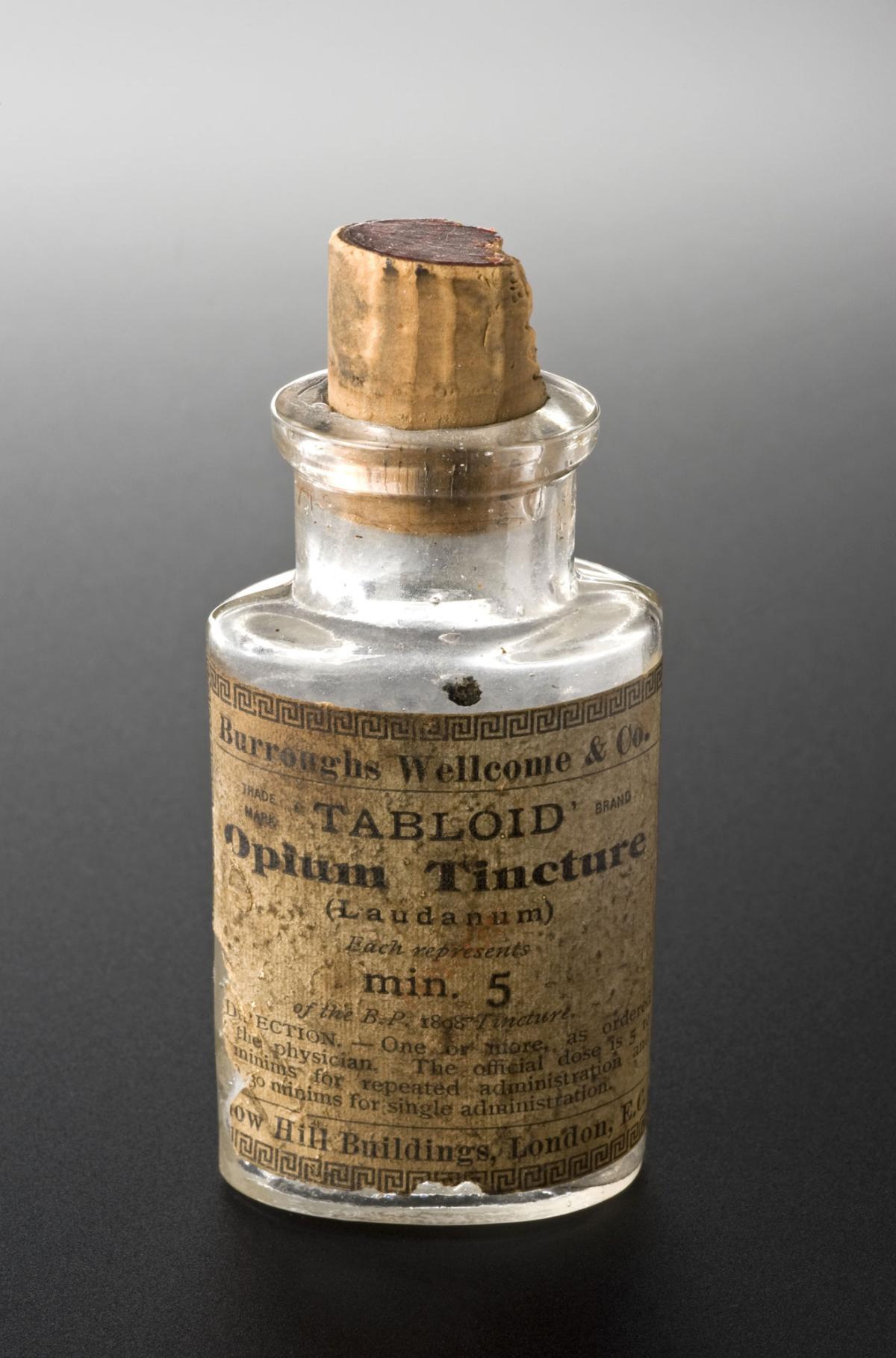Laudanum is a tincture of water or alcohol mixed with a 10% opium solution. Opium's medicinal properties have been well known for centuries but really gained traction in England only after the nation took control of several major cities in India during the later end of the 18th century. This led to Britain becoming invovled in the highly lucrative opium trade with China and India. Opium began to be a popular commodity in England and laudanum quickly took center stage as a cure all medicine. To quote the Victorian Web, " Laudanum, called 'the aspirin of the 19th century,' was widely used in Victorian households as a painkiller, recommended for a broad range of ailments including cough, diarrhea, rheumatism, 'women's troubles', cardiac disease, and even delirium tremens" ( source). Laudanum was affordable and used by all classes and genders although it was heavily marketed towards women and children. Not only was it believed to treat all manner of illnesses, it was also marketed as something to soothe teething or unruly children. 25 drops could be purchased for as a little as a penny, making it cheaper than alcohol in some cases.
Not only did it serve as a pain killer, laudanum was also a popular narcotic. Laudanum is highly addictive and users would become accustomed to the euphoric highs it gave. Withdrawal symptoms were harsh and difficult to manage. Many famous writers including Emily Barrett Browning, Charles Dickens, and Elizabeth Gaskell used the drug. One man, Thomas De Quincey went so far as to chronicle his addiction to laudanum in his autobiographical, Confessions of an English Opium-Eater.
In 1868, laws changed making laudanum onlyavailable for purchase through licensed chemists. It also had to be clearly labeled as a poison. By 1899, aspirin was created and society moved towards safer painkillers.


